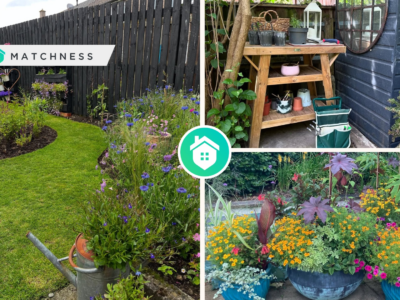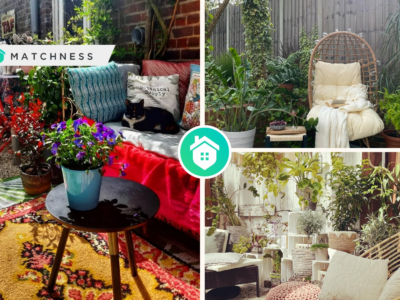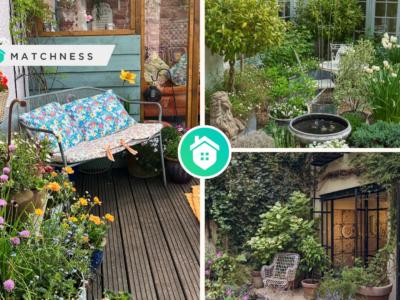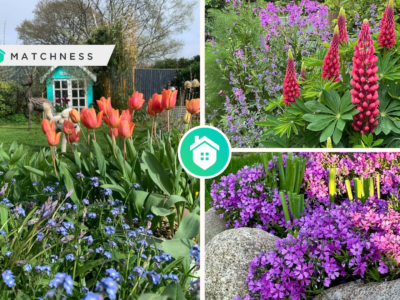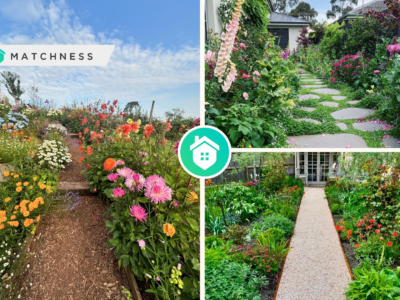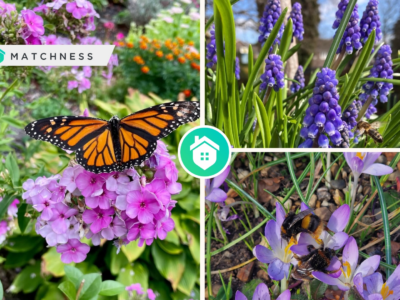Uncover the secrets of a Japanese garden, where tranquility and whimsy intertwine. Embrace the art of peaceful meditation as you create a space that is both simple and naturally enchanting. Immerse yourself in the essence of Japanese-inspired design by weaving together the vital elements of stone, plants, water, and ornaments. Get ready to unleash your creativity, but remember to tread lightly with plants. In an authentic Japanese-style landscape, lush flower borders and succulents take a playful backseat, allowing other elements to shine and guide you on your peaceful path.
Embark on a journey through the enchanting world of Japanese gardens, where three main types—Karesansui (rock/dry), Tsukiyama (hill/pond), and Chaniwa (tea ceremony)—serve as captivating sources of inspiration. Delve further into the realm of these serene landscapes as we introduce additional garden types, including traditional stroll gardens, temple paradise gardens, pond gardens featuring expansive lakes or ponds, and intimate courtyard gardens nestled within homes or shops.
The timeless allure of Japanese gardens is often accentuated by the use of stone or gravel. In particular, rock zen gardens boast the ethereal Shirakawa-suna, a sand sourced from the serene Shirakawa River in Kyoto. Composed of granite, quartz, black mica, and white feldspar, this unique blend creates a captivating ambiance. For those seeking a local alternative in the United States, consider using pea gravel, known for its smooth texture and small size, which closely resembles the authentic Japanese sand.
Continue reading to uncover a set of invaluable guidelines—commonsense Japanese garden design principles—that shed light on what not to do, allowing you to approach your garden design with wisdom and finesse.
Avoid Painting Wood Features
Step away from the paintbrush when it comes to wooden benches, fences, gates, arbors, and other garden structures. Rather than coating them in paint, opt to stain them as necessary or let them gracefully weather over time. However, there is one notable exception to this rule: a vibrant bridge that commands attention as a focal point. These eye-catching features are often painted in a striking red-orange hue and adorned with a glossy lacquer finish.

As a focal point in the garden, this is an exception! You will need to paint the bridge red-orange and embellish it with a layer of glossy varnish to make it stand out. Red-orange Bridge from @une.ile.entre.le.ciel.et.leau
Avoid an Overabundance of Colors
Exercise caution when incorporating chrysanthemums and begonias into your garden design, as an excessive burst of color can overpower the landscape and disrupt its natural flow. Instead, employ bright hues sparingly, using them as tasteful accents to enhance the overall composition. By finding the perfect balance, you can create a captivating and harmonious garden that delights the senses without overwhelming them.

This garden carries a perfect balance of colors. Blends of flowers such as plum blossoms, cherry blossoms, azaleas, and hydrangeas create a garden color that delights the senses without overwhelming them. Pool Garden from @oniwastagram
Exercise Restraint in Japanese Accessories
Indulging in your admiration for Buddha figures, pagodas, bridges, and lanterns is a natural inclination when designing your Japanese garden. However, it’s important to remember the principle of “less is more.” Excessive use of these accents can overwhelm your yard and transform it into a mere display of your collection.
Similarly, when incorporating Asian-inspired elements, exercise discernment and avoid the temptation to include everything that appears remotely Asian in your Japanese garden. Opt for a refined selection that harmonizes with the overall aesthetic and captures the essence of Japanese design. By carefully curating your accents, you can create an atmosphere of understated elegance and ensure that each element contributes to the authenticity and tranquility of your garden.

The basic principle of the Japanese garden is “design with nature”, so adding this stone lantern to your Japanese garden will bring out a natural tendency when designing your garden. There is no need to make them stand out, but just because of their presence, our minds will be serene and pure. The Japanese Lantern from @tokyojournal
Don’t Use Colored Stones
In a Japanese garden, the use of white gravel, or any other color for that matter, appears unnatural. The same principle applies to glass or any other artificial materials.

Instead of using white pebbles or other colored rocks, you are advised to use river stones. Its presence will make the natural Japanese vibes more pronounced. Japanese Garden and Stone River from @studioasa_id
Avoid the Practice of Shaping Shrubs into Topiaries
While giraffes, dogs, and bunny rabbits may seem endearing, they are not suitable for a Japanese garden. Reserve such decorative choices for another yard, perhaps the one where you have a wishing well and playful gnome statues.

Garden gnomes have been around for centuries; they make up the garden’s guardians. Some people find them adorable and fun, while others find them kitschy, creepy, or weird. So the choice is yours: add gnomes to the Japanese garden or not. Gnome Statue from @acornpete
Don’t Combine Out-of-Scale Elements
In Japanese garden design, maintaining proper proportions is crucial. For example, a small bridge paired with a large boulder would be considered incorrect and out of balance.

Pay attention to this small bridge; its proportional balance covers various directions. As explained earlier, it is very important in Japanese garden design. Small Bridge from @fryburg_photography
Don’t Mix Unnatural Rock Forms
Avoid combining rocks and rock formations in a Japanese garden that would not naturally occur together. Mixing rocks typically found in a forest with those from a desert, for instance, may create an odd and mismatched appearance.

The layout of the land, garden stone paths, and bank protection structures in this Japanese garden look very harmonious and impressive. The combination creates colors that remain natural without being overdone. Stone Pathway from @yoneyamateien
Avoid Displaying Plastic Basins
Waterfalls play a significant role in Japanese gardens, and it is not uncommon for them to be constructed using plastic materials. However, it is essential to remember to effectively conceal them using soil, rocks, and plants.

For this one matter, we recommend that you make a waterfall with stones instead of plastic and then cover it with soil or rocks. Making it directly with stone will certainly save time and money without having to work twice. Waterfalls from @yaponskiy_sad_krd
Avoid Arranging Items in Even Numbers
Free yourself from the inclination towards symmetry and the belief that even numbers are inherently superior. Instead, recognize that garden elements appear more visually appealing and organic when arranged in groupings of odd numbers. This principle generally applies to various forms of modern design, both indoors and outdoors.

These stone lanterns are arranged in groups of odd numbers, and of course not without reason; an arrangement like this makes it look more interesting than if you arrange them in an even number. Stone Lanterns Stacked from @andikaltenecker
Don’t Use Cute Accessories
Each individual has their own interpretation of what is considered “cute,” but it is highly probable that plastic or plaster figures, folksy signs, and other outdoor design elements would appear out of context. The following items should be avoided in a Japanese garden:
- Gnomes and flamingos
- Signs displaying phrases like “Welcome to Mom’s Japanese Garden” or “Love Grows Here”
- Windchimes and suncatchers
- Inappropriate accessory buildings such as gazebos, trellises, pergolas, and sheds that do not align with the Japanese garden style.

Instead of using cute accessories, we recommend using a Buddha statue. Sculptures like this carry an Asian feel, which is certainly suitable for Japanese garden styles. Buddha Statue from @themontskel

This Buddha statue serves as an ideal decoration for various spaces like gardens, patios, yards, lawns, porches, and even indoor spiritual living rooms. It can also be collected as a decorative item or given as a thoughtful gift for offices. The statue is crafted from a safe and environmentally friendly resin material. Its antique stone color and intricate details provide a sense of historical charm. Moreover, it is durable and resistant to both sunlight and rain, making it suitable for various weather conditions.
Don’t Prune Pines to Look Like Christmas Trees
While pine trees are commonly recommended for Japanese gardens, it is important to note that not every pine tree should be pruned into the shape of a Christmas tree. In Japanese landscaping, pine trees are valued for their natural and irregular forms.

Pine trees in a Japanese garden should look natural. By maintaining the original stem shape, it means maintaining its naturalness. Pine Trees from @cha_chan_9




